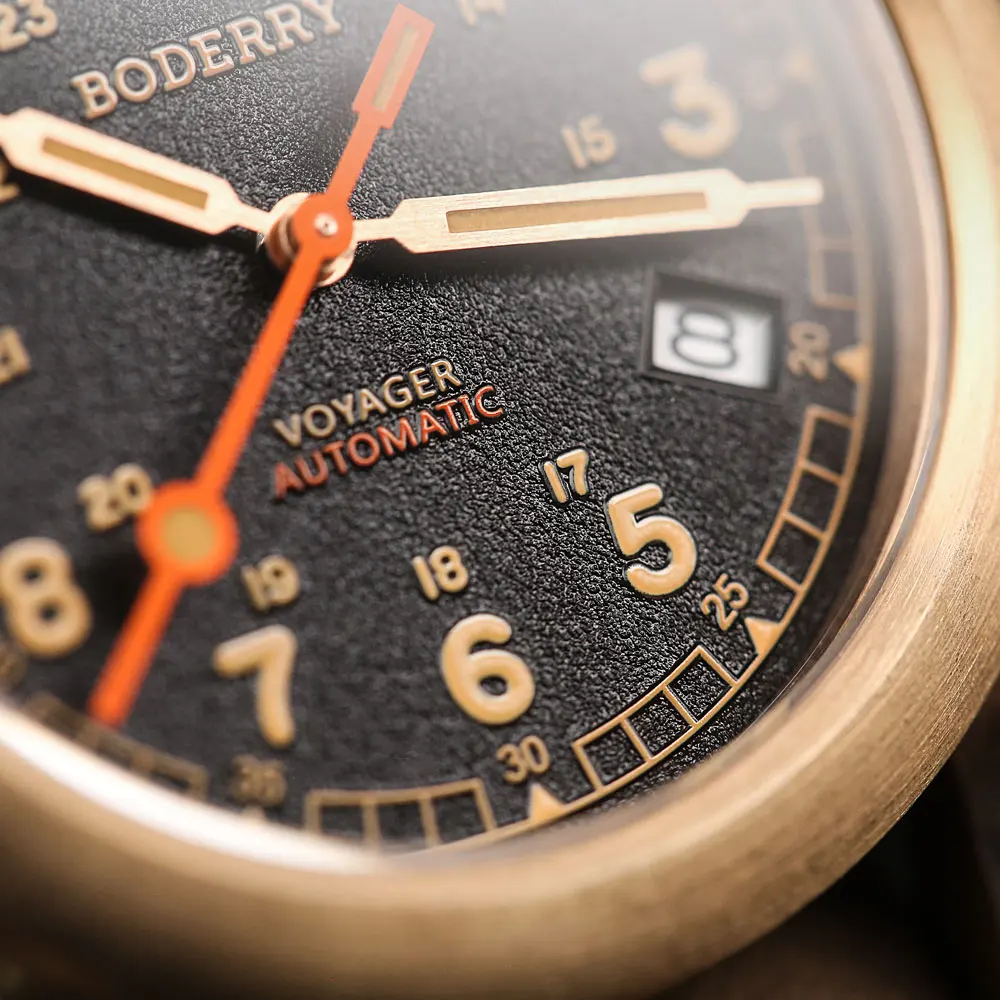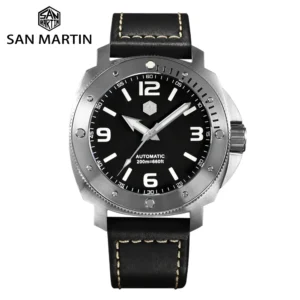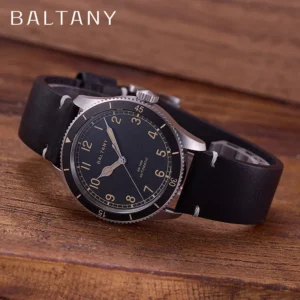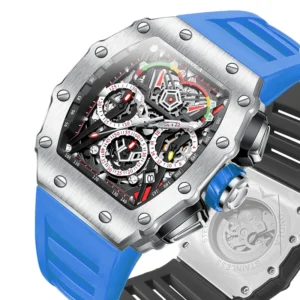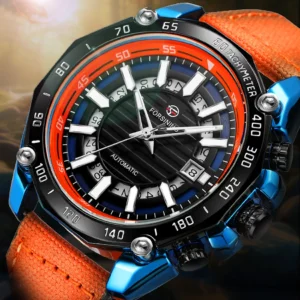Understanding Bronze Patination
Patina is the distinctive thin layer that develops on bronze surfaces through a series of natural oxidation processes and chemical reactions. This transformation occurs when the copper in bronze interacts with air, moisture, and other environmental elements, creating a new surface compound with unique visual characteristics.
Bronze patination happens in two primary ways. Natural patination develops organically over time through environmental exposure, with bronze gradually changing from its initial bright golden color to deeper browns and eventually greens. Artificial patination, on the other hand, involves deliberately applying chemicals to accelerate and control this process, allowing for specific aesthetic outcomes.
What makes patination so valuable is its dual purpose. While many appreciate the rich, varied colors and textures for their aesthetic appeal, patinas also serve a crucial protective function by forming a stable layer that helps shield the underlying metal from further corrosion. This protective quality explains why ancient historical diving watch engineering principles often incorporated bronze elements that have survived remarkably well over centuries.
The practice of patination bridges both art and science, requiring technical knowledge of chemical reactions alongside an artistic sensibility for color and texture. From ancient civilizations that valued the evolving appearance of their bronze artifacts to modern applications in sculpture, architecture, and fine timepieces, patination techniques have been refined over thousands of years.
Understanding the Terminology
Patina: A stable surface layer that forms through controlled oxidation, adding character and protection.
Tarnish: A discoloration that forms on metal surfaces, typically through reaction with sulfur compounds.
Corrosion: Deterioration of metal through chemical reactions with its environment, often causing structural damage.
The underlying scientific processes that create these striking visual effects involve complex interactions that have fascinated craftspeople and scientists alike. Understanding how bronze watch patina forms provides crucial insight into this fascinating transformation.
The Chemistry Behind Bronze Patination
The fascinating color changes in bronze patination result from specific chemical reactions between the metal and its environment. Bronze itself is primarily a copper-tin alloy, with copper making up the largest percentage—typically around 88-95%. It’s this copper content that actively participates in the patination process.
When bronze is exposed to oxygen, the copper begins to oxidize, forming copper oxide compounds. This initial reaction creates reddish-brown tones. As exposure continues, particularly in humid environments, copper hydroxide forms, introducing greenish hues. When sulfur compounds interact with the bronze, they produce copper sulfide, yielding deep browns and blacks—a reaction commonly leveraged in controlled patination.
Different chemical reactions create distinct color outcomes:
– Oxygen interaction → reddish-brown tones
– Chloride exposure → light green to turquoise
– Sulfur compounds → deep browns to blacks
– Nitrogen compounds → blues and greens
The exact bronze composition significantly affects these reactions. Higher copper content typically allows for more dramatic color development, while varying percentages of tin, zinc, or other elements can either enhance or inhibit certain reactions. This chemical foundation explains why bronze watch patina development varies so dramatically depending on environmental conditions and alloy composition.
Understanding these chemical principles empowers artisans and collectors to better control and predict patination outcomes, whether allowing natural development or applying specific compounds to achieve desired effects.
Essential Safety Precautions for Bronze Patination
⚠️ WARNING: PATINATION CHEMICALS CAN BE HAZARDOUS
Many chemicals used in bronze patination are toxic, corrosive, and can cause serious health problems if mishandled. Never attempt chemical patination without proper safety equipment and ventilation.
Before beginning any patination project, always gather these essential safety items:
- Chemical-resistant gloves (nitrile or neoprene, not latex)
- Safety goggles or full-face shield for eye protection
- Appropriate respirator rated for chemical fumes
- Protective clothing (long sleeves, pants, closed shoes)
- Chemical-resistant apron
Proper ventilation is non-negotiable. Always work outdoors or in a space with powerful mechanical ventilation that draws air away from your breathing zone. Never patinate bronze in enclosed spaces like bathrooms or small workshops without ventilation.
All chemicals must be clearly labeled, stored in appropriate containers, and kept away from children, pets, and food preparation areas. Chemical waste requires special disposal—never pour patination solutions down regular drains or discard them in household trash.
In case of chemical exposure, know emergency procedures: have an eyewash station or clean water source available, know the location of your safety shower if available, and keep a first aid kit nearby. For serious chemical exposure, seek medical attention immediately.
These precautions apply whether you’re working with commercial patination products or creating your own solutions. The beautiful patina on bronze automatic watches may look appealing, but the chemicals that create these effects demand respect and careful handling.
Surface Preparation: The Foundation for Successful Patination
Proper surface preparation is the single most critical factor determining patination success. Even the best chemicals and techniques will fail if applied to a poorly prepared bronze surface.
The preparation process involves several essential steps:
Thorough Cleaning: Remove all oils, fingerprints, and contaminants using solvents like acetone or denatured alcohol. Apply with lint-free cloths, changing them frequently to avoid redepositing contaminants.
Degreasing: For heavily soiled surfaces, use a commercial degreaser or prepare a solution of warm water with mild dish soap, followed by thorough rinsing with clean water.
Mechanical Preparation Options:
* Fine sandpaper (320-600 grit) – For smooth, even surfaces
* Wire brushing – For textured finishes and hard-to-reach areas
* Sandblasting – For large areas or heavily corroded surfacesFinal Surface Check: A properly prepared surface should demonstrate the “water break-free” test—when rinsed with distilled water, the water should sheet evenly across the surface without beading up. Beading indicates remaining oils or contaminants.
Final Rinse: Complete preparation with a distilled water rinse to remove any remaining cleaning residues and chemical traces.
If your patina later develops unevenly or fails to adhere, inadequate surface preparation is the most likely culprit. Techniques for how to force patina on bronze objects rely heavily on proper preparation—you cannot skip or rush this stage without compromising your results.
Hot Patination Process: Methods and Techniques
Hot patination creates some of the most vibrant and dramatic finishes by applying chemicals to heated bronze surfaces. This accelerated technique produces immediate color development, allowing for real-time adjustments and layering effects.
Heating the Bronze: Using a torch with a soft, diffused flame, heat the bronze evenly until it reaches the appropriate temperature. The ideal range is when water droplets sizzle but don’t immediately evaporate (approximately 200-300°F or 93-149°C). Avoid overheating as this can damage both the bronze and create dangerous chemical reactions.
Chemical Application: While the bronze remains hot, apply your chosen patination chemical using one of these methods:
* Brushing – Offers precise control for detailed work
* Spraying – Creates even coverage on larger areas
* Dripping – Produces interesting organic patterns and runsMonitoring Color Development: Colors develop almost immediately upon application. Continue heating or add more solution as needed to achieve desired intensity. The bronze temperature dramatically affects color development—higher temperatures generally produce faster, more intense reactions.
Cooling and Neutralizing: Once satisfied with the color, allow the piece to cool naturally before neutralizing the chemical reaction. This typically involves rinsing with distilled water followed by a mild baking soda solution to stop active reactions.
Repeating for Layered Effects: For complex finishes, repeat the process with different chemicals after the surface has cooled completely.
Hot patination offers quick results and vibrant colors but requires practice to master. The rapid chemical reactions demand confident timing and application, making this technique better suited for those with some patination experience.

Cold Patination Process: Methods and Techniques
Cold patination provides greater control over the process by applying chemicals to bronze at room temperature. This method allows for more deliberate development and subtle effects, making it ideal for beginners and detailed work.
Surface Preparation: As with hot patination, thoroughly clean and degrease the bronze surface. For cold patination, this step is even more critical since the chemical reactions happen more slowly and any contaminants will become more obvious.
Application Methods:
* Direct application – Brushing or sponging chemicals onto specific areas
* Dipping – Immersing smaller objects entirely in the solution
* Burying – Placing bronze in chemically treated materials like sawdust
* Fuming – Suspending bronze above chemical solutions to expose it to vaporsDeveloping the Patina: Cold patination develops gradually, often taking hours or even days to reach full color. This slower process allows for careful monitoring and adjustment. Apply additional layers once the previous application has dried to build depth and intensity.
Building Layers: Most cold patinas require multiple applications to achieve rich colors. Allow each layer to dry completely before applying the next. This layering creates depth and complexity in the final finish.
Neutralizing and Rinsing: Once the desired effect is achieved, thoroughly neutralize the chemicals with a mild baking soda solution, then rinse with distilled water to halt the chemical reactions.
Cold patination requires patience but offers more predictable results than hot techniques. Many enthusiasts of automatic field military watches prefer cold patination for its controllability and lower risk of damaging delicate components.
Common Patination Chemicals and Their Effects
Different chemicals produce distinct colors and textures on bronze surfaces. Understanding these options helps achieve your desired patina effect.
| Chemical | Typical Color Effect | Application Method | Safety Considerations |
|---|---|---|---|
| Liver of sulfur (potassium sulfide) | Browns to blacks | Dilute 1 oz (28g) in 1 quart (0.95L) warm water | Strong odor; use in ventilated area; wear gloves |
| Ferric nitrate | Orange-reds to rich browns | 1-4 oz (28-113g) per quart (0.95L) of water | Corrosive; avoid skin/eye contact |
| Cupric nitrate | Greens to blue-greens | 2-6 oz (57-170g) per quart (0.95L) of water | Toxic; requires respiratory protection |
| Ammonium chloride | Light blues to pale greens | 2-3 oz (57-85g) per quart (0.95L) of water | Irritant to eyes and respiratory system |
| Sodium thiosulfate | Warm browns to blacks | 4 oz (113g) per quart (0.95L) of water | Low toxicity but still requires gloves |
| Vinegar + salt (DIY option) | Verdigris greens | Equal parts white vinegar and salt | Safer alternative but slower acting |
Always use distilled water for mixing patination chemicals, as minerals in tap water can interfere with the chemical reactions. Store solutions in glass or plastic containers clearly labeled with contents and preparation date—many solutions deteriorate over time.
For consistent results, record exact measurements, temperatures, and development times. This documentation becomes invaluable when attempting to recreate specific effects on future projects.
Many owners of rugged automatic watches appreciate how these patination chemicals can create unique finishes that enhance the character of bronze timepieces, though natural patination remains the preference for daily-wear pieces.
Step-by-Step Patina Recipe Examples
Rich Brown Patina (Liver of Sulfur)
Ingredients:
– Liver of sulfur (potassium sulfide): 1 tablespoon (15ml)
– Warm distilled water: 1 quart (0.95L)
– Baking soda solution for neutralizing
Process:
1. Mix liver of sulfur with warm water in a glass container
2. Clean and degrease bronze thoroughly
3. Apply solution with a sponge or brush
4. Allow to develop for 3-5 minutes
5. Rinse with distilled water
6. Neutralize with baking soda solution
7. Repeat for darker color if desired
8. Final rinse and dry completely
Result: Deep chocolate to black-brown finish with warm undertones
Verdigris Green Patina
Ingredients:
– Cupric nitrate: 3 oz (85g)
– Distilled water: 1 quart (0.95L)
– Spray bottle
Process:
1. Dissolve cupric nitrate in water
2. Clean bronze surface thoroughly
3. Spray solution evenly on bronze
4. Allow to air dry for 30-60 minutes
5. Mist with water to activate
6. Let develop for 12-24 hours
7. Neutralize and rinse thoroughly
Result: Classic green patina reminiscent of aged outdoor bronze
Blue-Green Ammonia Fuming Patina
Ingredients:
– Household ammonia: 1 cup (240ml)
– Salt: 1/4 cup (60g)
– Plastic container with lid
Process:
1. Place ammonia and salt in container (do not mix with bronze)
2. Create platform to suspend bronze above liquid
3. Place clean bronze on platform
4. Seal container tightly
5. Allow to fume for 12-48 hours, checking periodically
6. Remove when desired color is achieved
7. Rinse thoroughly with distilled water
Result: Atmospheric blue-green patina with organic patterns
Deep Black Patina (Multi-Chemical)
Ingredients:
– Liver of sulfur solution (as above)
– Ferric nitrate solution: 2 oz (57g) per quart (0.95L)
– Application brushes
– Heat source (optional)
Process:
1. Apply liver of sulfur and allow to develop partially
2. Rinse lightly but do not neutralize
3. Apply ferric nitrate solution over first layer
4. Heat gently if using hot patination method
5. Allow to develop for 10-15 minutes
6. Neutralize with baking soda solution
7. Rinse thoroughly with distilled water
Result: Deep, rich black with subtle variations
These patination methods reflect similar principles to the evolution of dive watch technology, where layering materials creates both functional and aesthetic benefits. Each recipe can be modified by adjusting concentration, application method, and development time.
Layering and Special Effects Techniques
Creating truly distinctive patinas often requires moving beyond basic single-color applications to more sophisticated layering techniques. These methods add depth, dimension, and visual interest to bronze surfaces.
Depth Through Layering:
* Begin with a base patina that covers the entire surface
* Once dry and sealed, selectively apply a second color to specific areas
* Build additional layers to create rich, complex finishes
* Allow each layer to fully develop before adding the next
Highlighting Techniques:
* After developing the base patina, gently rub high points with fine steel wool
* This selective removal creates contrast between recessed and raised areas
* For precise control, use cotton swabs dipped in diluted ammonia
* Work gradually—you can always remove more but cannot easily replace patina
Masking Methods:
* Apply petroleum jelly or wax to areas you want to protect
* Create precise patterns using painter’s tape or stencils
* Remove masking immediately after applying chemicals
* Clean protected areas thoroughly with solvent after patination is complete
Creating Variegated Effects:
* Apply patina solutions unevenly or with different concentrations
* Use spray bottles with variable nozzles to control application
* Introduce texture with natural sponges, crumpled paper, or textured cloths
* Strategically drip water during development to create organic patterns
These advanced techniques are often featured in military-inspired automatic watches where subtle details and unique finishes enhance the character of bronze components, creating truly distinctive timepieces.
Sealing and Protecting Finished Patinas
Once you’ve achieved your desired patina, proper sealing is essential to preserve the finish and prevent unwanted changes. Without protection, patinated bronze remains reactive—continuing to change with handling and environmental exposure.
Wax Options:
* Renaissance Wax – Microcrystalline museum-quality protection with minimal visual impact
* Carnauba Wax – Creates a harder, more durable finish with slight shine
* Paste Wax – Economical option that provides good protection with regular reapplication
* Application: Apply thin layer with soft cloth, allow to haze, buff with clean cloth
Lacquer Options:
* Acrylic Lacquers – Clear, non-yellowing protection available in various sheens
* Incralac – Specialized bronze lacquer containing UV inhibitors
* Application: Apply in thin layers with spray equipment, avoiding drips and runs
Oil Options:
* Linseed Oil – Traditional protection that darkens slightly with age
* Tung Oil – Creates water-resistant finish with minimal color change
* Application: Apply sparingly, wipe excess after 15 minutes, cure 24+ hours
Finish Considerations:
* Matte finishes – Use dulling agents like flatting paste or choose matte products
* Satin finishes – Light buffing of semi-gloss sealants
* Glossy finishes – Multiple layers of high-gloss lacquer or well-buffed wax
Different protection methods suit different applications. For example, outdoor bronze requires more durable protection than display pieces, while handling frequency affects maintenance needs. The history of professional diving watches evolution shows similar attention to protective finishes that preserve both function and appearance.
Maintenance and Care for Patinated Bronze
Proper maintenance ensures your patinated bronze maintains its beauty and character for years to come. Regular care prevents unwanted changes and preserves your carefully created finish.
Regular Cleaning: Dust with a soft, dry microfiber cloth. Avoid paper towels or rough materials that might scratch the surface.
Fingerprint Removal: Human skin oils can alter patinas over time. Promptly wipe away fingerprints with a clean, dry cloth.
Wax Refreshing: Reapply wax coatings every 6-12 months for indoor pieces, more frequently for handled items. Look for dull spots or areas where water no longer beads as indicators.
Outdoor Considerations: Environmental exposure accelerates wear on protective coatings. Inspect outdoor bronze quarterly, clean with distilled water, and reapply protection as needed.
Avoiding Damage: Keep patinated bronze away from household cleaners, solvents, and acidic substances that can strip patinas. Even vinegar and lemon juice can damage finishes.
Handling Best Practices: When possible, wear cotton gloves when handling patinated bronze to prevent oils from compromising the finish.
If your patina becomes damaged or begins to deteriorate, assess whether simple reapplication of sealant will suffice or if you need to start fresh. Minor issues can often be touched up without completely stripping the finish.
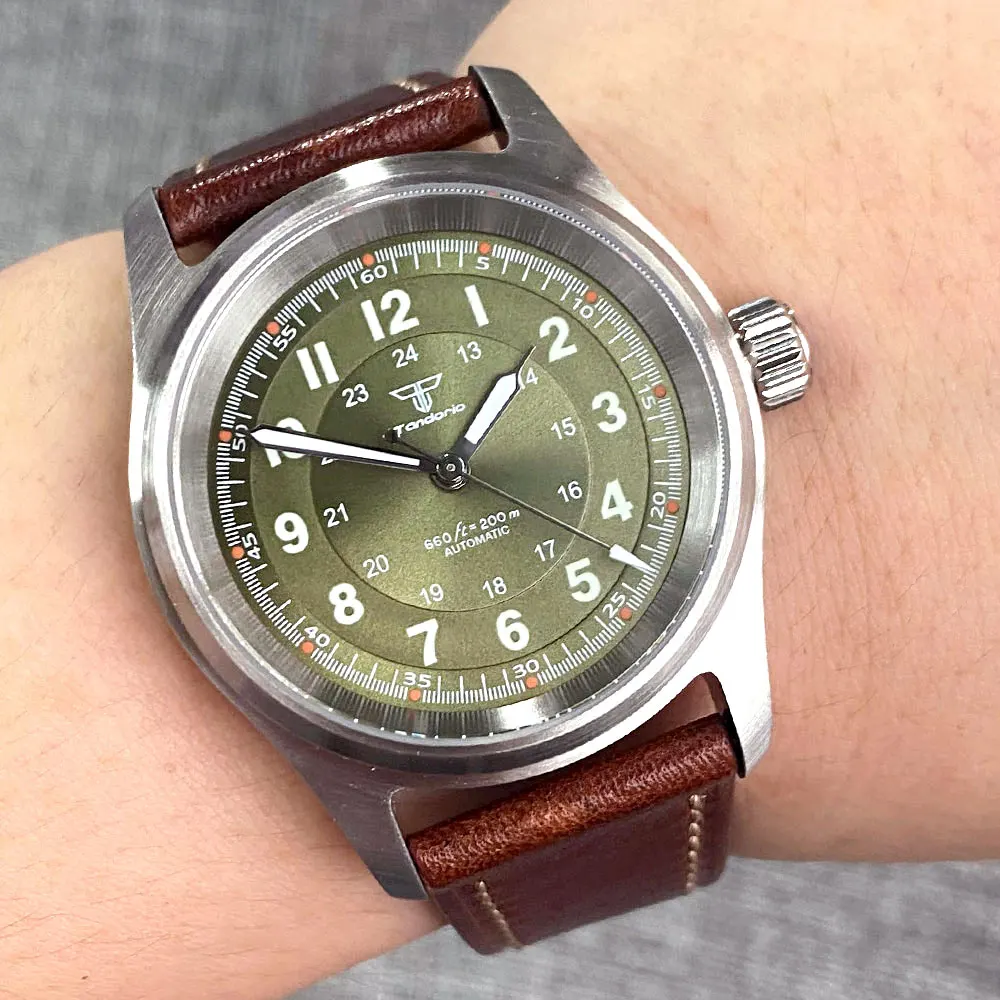
These maintenance principles apply equally to fine tactical automatic watches with bronze components, ensuring they maintain both their functionality and distinctive appearance.
Military Inspired Automatic Watches, Rugged Automatic Watches, Tactical Automatic Watches
Price range: $852.14 through $994.60 Select options This product has multiple variants. The options may be chosen on the product pageBronze Automatic Watches, Military Inspired Automatic Watches, Professional Spec Dive Watches
Price range: $1,442.21 through $1,442.82 Select options This product has multiple variants. The options may be chosen on the product pageClassic Pilot Watches, Military Inspired Automatic Watches
$561.00 Select options This product has multiple variants. The options may be chosen on the product pageRugged Automatic Watches, Unique Automatic Watches
Price range: $228.96 through $231.10 Select options This product has multiple variants. The options may be chosen on the product pageClassic Field Watches, Military Inspired Automatic Watches
Price range: $280.87 through $338.51 Select options This product has multiple variants. The options may be chosen on the product pageAutomatic Skeleton Watches, Military Inspired Automatic Watches, Unique Automatic Watches
$191.88 Select options This product has multiple variants. The options may be chosen on the product page
Tools and Equipment for Bronze Patination
Successful patination requires the right tools for each stage of the process. Investing in quality equipment improves both safety and results.
Safety Equipment:
* Chemical-resistant gloves (nitrile or neoprene)
* NIOSH-approved respirator with appropriate cartridges for chemical fumes
* Full-coverage safety goggles or face shield
* Chemical-resistant apron or coveralls
* First aid supplies including eye wash
Heating Tools:
* Propane torch with adjustable flame
* Heat gun for more controlled temperature
* Infrared thermometer for monitoring surface temperature
* Heat-resistant work surface or tripod
Application Tools:
* Natural bristle brushes (synthetic can melt with hot application)
* Spray bottles with adjustable nozzles
* Natural sea sponges for organic textures
* Droppers for precise application
* Cotton swabs for detail work
Mixing and Measuring:
* Glass or plastic containers (never metal)
* Plastic measuring spoons and cups
* Stirring rods (glass or plastic)
* Digital scale for precise chemical measurements
* pH testing strips
Surface Preparation:
* Various grits of sandpaper (220-600 grit)
* Steel wool (0000 for finest work)
* Scotch-Brite pads in various grades
* Polishing cloths
Keep patination tools separate from other tools and clearly marked for chemical use only. Cross-contamination can ruin both your patination project and other household items.
For specialized applications, consider investing in additional tools like airbrushes or custom stencils. Many enthusiasts of classic field watches maintain a dedicated workspace with these specialized tools to refine their patination techniques.
Common Patination Problems and Solutions
Even experienced artisans encounter challenges with patination. Understanding common issues and their solutions helps troubleshoot problems quickly.
Uneven Patina Development
* Problem: Patchy or blotchy color development
* Causes: Inconsistent surface preparation, uneven chemical application, or contamination
* Solution: Strip the patina completely, ensure thorough cleaning and degreasing, and apply chemicals with consistent technique
Patina Not Adhering
* Problem: Chemical reaction occurs but washes away easily
* Causes: Surface oils or residues, improper concentration, insufficient development time
* Solution: Re-clean surface with solvent, adjust chemical concentration, and allow longer development time
Wrong Color Development
* Problem: Colors differ significantly from expected results
* Causes: Bronze alloy variations, chemical concentration issues, or contamination
* Solution: Test chemicals on a small, hidden area first; adjust concentration or try alternative chemicals
Flaking or Peeling Patina
* Problem: Patina separates from the bronze surface
* Causes: Excessively thick application, improper neutralization, or inadequate drying between steps
* Solution: Apply thinner layers, ensure thorough neutralization, and allow complete drying between applications
Muddy or Unclear Colors
* Problem: Colors appear dull or lack definition
* Causes: Over-application, overlapping incompatible chemicals, or premature sealing
* Solution: Work with lighter applications, thoroughly rinse between different chemicals, and ensure complete drying before sealing
Unwanted Color Shifts
* Problem: Colors change after sealing or over time
* Causes: Incomplete neutralization, incompatible sealant, or environmental factors
* Solution: Ensure thorough neutralization, test sealants on a small area, and consider environmental conditions
Remember that successful patination often involves experimentation and practice. Keep detailed notes on your process to help identify what variables might be causing problems.
Is Bronze Patination Right for Your Project?
Before embarking on a patination project, consider these key questions to determine if this process aligns with your skills, resources, and goals.
What is your experience level with chemicals and metalworking?
Bronze patination involves handling potentially hazardous chemicals and understanding metal properties. Beginners should start with simpler cold patination techniques using milder chemicals like vinegar and salt solutions before progressing to more complex methods.
Do you have an appropriate workspace and safety equipment?
Patination requires good ventilation, access to water, chemical-resistant surfaces, and proper safety gear. Without these essentials, consider professional services instead of attempting patination yourself.
What is the size and scope of your project?
Small objects like jewelry or decorative pieces are ideal starting points. Large sculptures or architectural elements present significant challenges in achieving consistent results and may require professional expertise.
What are your aesthetic goals?
If you desire a specific, controlled appearance, artificial patination offers precision. If you prefer an organic, evolving finish, natural patination might better suit your needs—simply allowing bronze to age naturally through handling and environmental exposure.
Are you prepared for variable results?
Even with careful technique, patination can be unpredictable. Each piece of bronze responds differently based on its exact composition. This variability creates unique results but may frustrate those seeking perfect consistency.
For beginners, consider these entry points:
* Experiment on small, non-valuable bronze items
* Start with safer chemicals like household vinegar and salt
* Practice surface preparation techniques before attempting chemical patination
* Document your process to learn from both successes and failures
Whether for artistic expression or practical preservation, understanding the patination process helps you make informed decisions about how to approach your bronze projects.

